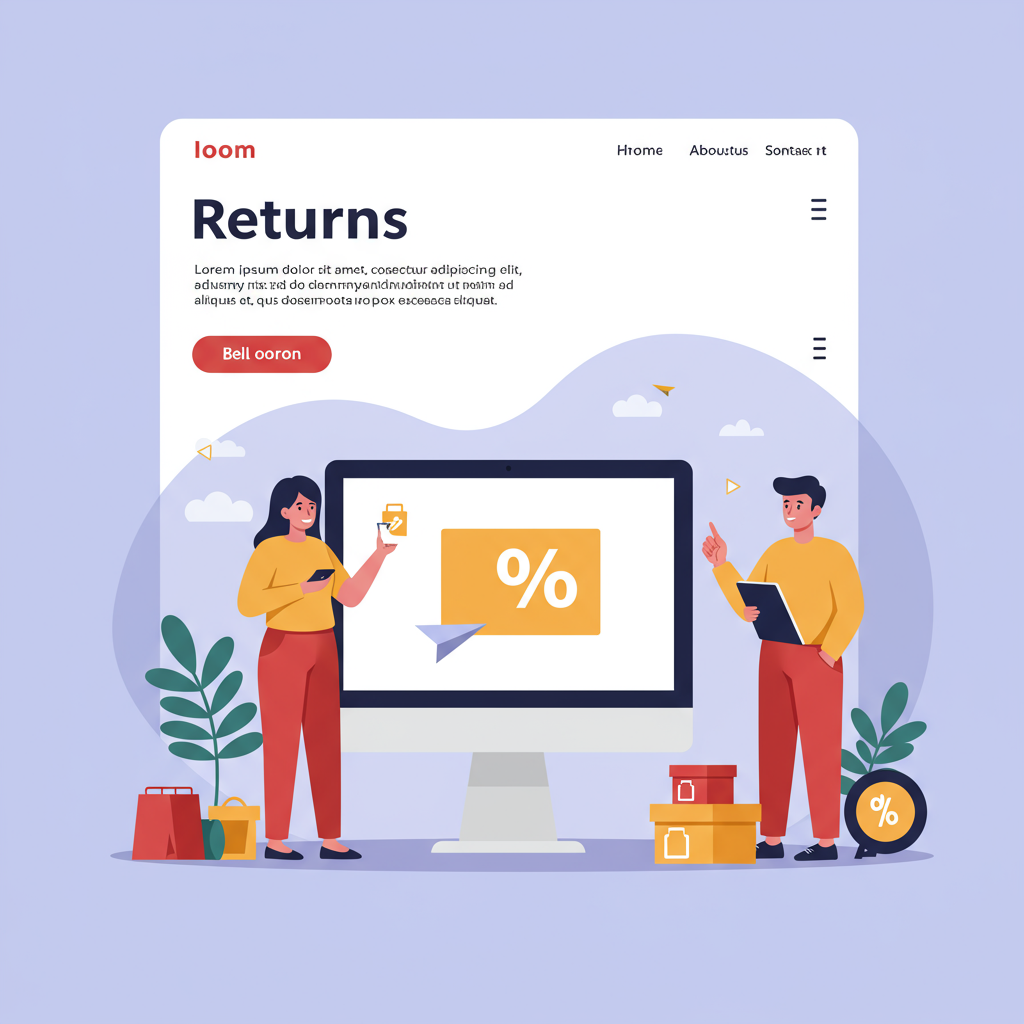Transforming a necessary evil into a powerful tool for customer loyalty and brand trust.
As a Shopify merchant, you know the thrill of a sale. It’s the culmination of hard work, marketing efforts, and a great product. But what about the less glamorous side of e-commerce: returns?
It’s a reality of online retail, and how you handle it can significantly impact your brand’s reputation, customer loyalty, and ultimately, your bottom line.
Today, I want to talk about something crucial yet often overlooked: the User Experience (UX) of your Shopify returns policy.
Many merchants view returns as a necessary evil, a cost center that eats into profits. But I see it differently. I believe it’s an opportunity – an opportunity to build trust, reinforce your brand’s commitment to customer satisfaction, and even foster repeat business.
A clunky, confusing, or frustrating returns process can quickly turn a satisfied customer into a vocal detractor, leading to negative reviews and lost future sales.
Conversely, a smooth, transparent, and easy return experience can transform a potentially negative interaction into a positive brand touchpoint, leaving the customer feeling valued and understood.
Our goal here is to reduce friction in your Shopify returns policy UX. What exactly does ‘friction’ mean in this context?
It’s any obstacle, confusion, or extra effort a customer encounters when trying to understand or initiate a return. Think about it from their perspective.
Are your policies hidden deep within your website? Are the instructions for returning an item unclear? Do they have to jump through hoops or wait endlessly for approval? These are all friction points.
So, how do we, as Shopify store owners, design a returns process that’s as seamless and intuitive as our checkout experience?
First and foremost, **Clarity and Transparency** are paramount. Your returns policy shouldn’t be a treasure hunt for your customers.
It needs to be easily accessible from multiple points on your website: your footer, product pages, and even your order confirmation emails.
Use plain, straightforward language. Avoid legal jargon or overly complex sentences. Clearly state what can be returned, when (your return window), and under what conditions (e.g., original packaging, unworn).
Second, focus on **Ease of Access** to the return initiation process itself. Don’t make customers jump through hoops to start a return.
Consider implementing a dedicated returns portal. While Shopify offers basic order management, third-party apps are often key here.
These portals allow customers to self-serve, initiating returns, selecting reasons for the return, and even printing pre-paid shipping labels without needing to contact your customer support team.
Third, ensure a **Streamlined Process** once a return is initiated. What happens next? Keep the steps minimal, logical, and clearly communicated.
Provide clear, step-by-step instructions on how to package the item, where to send it, and what to expect regarding refunds or exchanges.
Fourth, **Proactive Communication** is vital. Don’t leave customers in the dark. Send automated updates at each stage of the return process.
This includes confirmation of the return request, notification when the item is received at your warehouse, and confirmation of refund or exchange processing.
Fifth, consider **Flexibility and Options**. While you need a clear policy, offering choices can enhance the experience.
For instance, beyond a full refund, could you offer exchanges for different sizes or colors? Or perhaps store credit, which keeps revenue within your business?
Sixth, **Leverage Shopify’s Ecosystem** to its fullest. While Shopify itself provides robust order management, its app store is where the real power lies for returns management.
Apps like Returnly, Loop Returns, or AfterShip Returns Center can automate much of this process, integrating directly with your store’s orders and inventory.
These tools can handle return requests, generate shipping labels, manage inventory adjustments, and even automate refund processing, significantly reducing manual effort.
A dedicated ‘Returns’ page on your Shopify store is an absolute must. Make it comprehensive, including a clear link to your full policy, a concise FAQ section, and direct access to your returns portal.
Offering pre-paid return labels, while an added cost, significantly reduces customer effort and is often seen as a sign of excellent customer service and confidence in your products.
Integrating your returns process with your customer service team is also vital. They should have quick access to return statuses and be able to assist customers efficiently if issues arise.
Finally, implement **Feedback Loops**. After a return is completed, consider sending a brief, automated survey. Why was the item returned? Was it size, quality, or something else?
This data is invaluable for product improvement, reducing future returns, and identifying common issues that might need addressing in your product descriptions or sizing guides.
By focusing on these UX principles, you’re not just managing returns; you’re enhancing the entire customer journey, from initial purchase to post-sale support.
You’re building a reputation for reliability, transparency, and excellent service, which translates directly into increased customer loyalty and repeat purchases.
A smooth returns experience can even differentiate you from competitors who still treat returns as an afterthought or a burden.
It significantly reduces the burden on your customer support team, freeing them up for more complex inquiries and proactive customer engagement.
And perhaps most importantly, it instills confidence in potential buyers, knowing that if something isn’t quite right, the process to fix it will be painless and respectful.
So, what do you think about these strategies for improving your Shopify returns policy UX? I’d love to hear your thoughts and experiences.
Implementing even a few of these suggestions can make a significant difference in how your customers perceive your brand and interact with your business.
Remember, every interaction, even a return, is an opportunity to reinforce a positive brand image and build lasting customer relationships.






